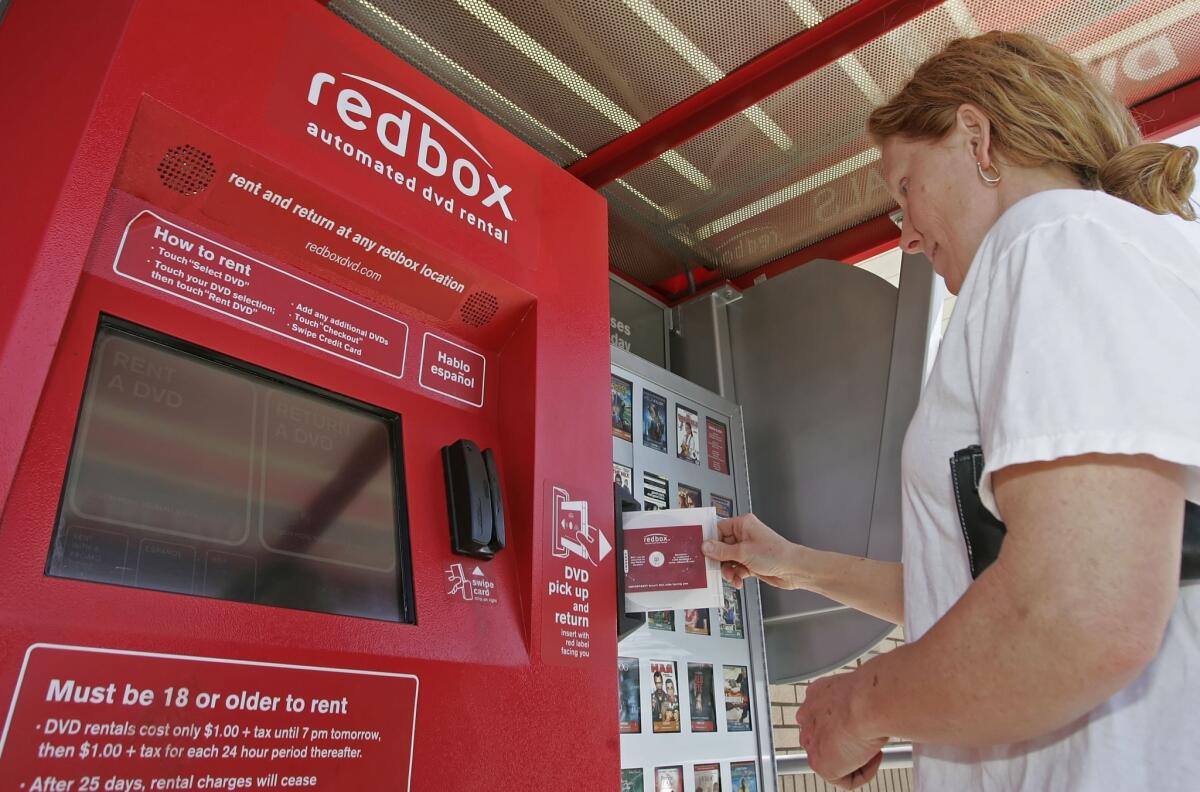Home entertainment business grows 2% in first half

- Share via
The home entertainment business is growing again, albeit slowly, despite the fact that people continue to spend less on DVDs.
After years of declines, total consumer spending on movies for home use grew 2% in the first half of the year to $8.63 billion.
People increasingly spent money to access or own digital copies of movies, which helped make up for declining sales of DVDs and Blu-ray discs. A 15% increase in sales of more expensive Blu-rays helped offset an overall decline in disc sales of about 5%.
FULL COVERAGE: Home Entertainment
Most of the business went to online retailers Amazon.com Inc., Apple Inc.’s iTunes store, Best Buy Co.’s CinemaNow, Google Play and Wal-Mart Stores Inc.’s Vudu.
Sales of electronic copies grew to $491 million in the first six months of 2013, up 50% from the same period last year. That segment, combined with the explosion in subscriptions to streaming services such as Netflix, helped digital revenue grow 24% over last year.
Studio executives said the growth in digital revenue was helped by services that make it easier for consumers to buy and watch electronic versions of movies and programming online, such as Ultraviolet.
Ultraviolet, a service that stores consumers’ purchased digital content online, grew to 13 million accounts in the first part of the year, up from 9 million at the end of 2012.
Executives also touted the now-common practice of making digital downloads available to consumers days and sometimes weeks before they’re released on DVD and Blu-ray. This makes owning electronic versions more attractive to customers than waiting for their release on discs or until they become available through streaming, said Steve Beeks, president and co-chief operating officer at Lions Gate Entertainment Corp.
“It’s to make the ownership proposition attractive to consumers,” Beeks said. “We’ve spent a lot of time as an industry helping them make the transition. It really allows consumers access to their programming any place at any time, and consumers are getting more comfortable with it.”
PHOTOS: Cable versus broadcast ratings
Home entertainment is an important revenue source for movie studios. Industrywide, sales of movies for use in the home accounted for $4.05 billion in the first half of the year, compared with $4.6 billion from movie theaters. It’s also where many movies that perform poorly at the box office can make up a lot of ground.
Ron Sanders, Warner Bros.’ home entertainment president, said the underlying trends in the industry are encouraging, especially because the parts of the business that are growing, such as digital copies and Blu-ray discs, have higher margins.
Although electronic sales contributed only a small portion of home entertainment revenue, Sanders said it is significant and he expects it to continue growing.
“It’s already materialized,” Sanders said. “It’s already the size of brick-and-mortar rental with a growth rate that says it’s going to be a significant part of the revenue for this year and next year.”
Rental spending, not including video-on-demand, fell 11%, continuing its slide.
Even video rental kiosks are faltering. Rentals through companies such as Redbox, which last year was the only category of rentals to grow, fell 4%.
PHOTOS: Hollywood Backlot moments
Streaming through Netflix and other services continued to grow. Subscription streaming spending increased to $1.49 billion for the first half, an increase of 32% year over year.
But Sanders argued that owning movies and TV shows is still attractive for consumers who can’t get the latest releases through streaming.
Things are looking up for the full year too, with big-budget films set to hit shelves — at bricks-and-mortar and online stores — in the second half of the year.
“The big summer releases will begin to come out, and we’ll continue to see that growth through the rest of the year,” Beeks said.
More to Read
From the Oscars to the Emmys.
Get the Envelope newsletter for exclusive awards season coverage, behind-the-scenes stories from the Envelope podcast and columnist Glenn Whipp’s must-read analysis.
You may occasionally receive promotional content from the Los Angeles Times.











